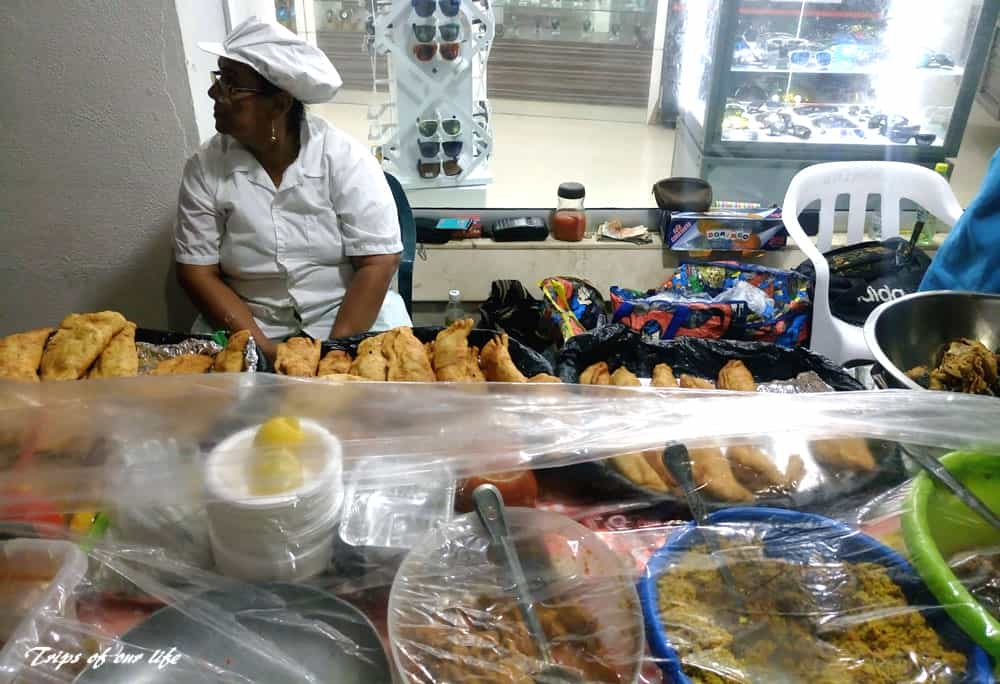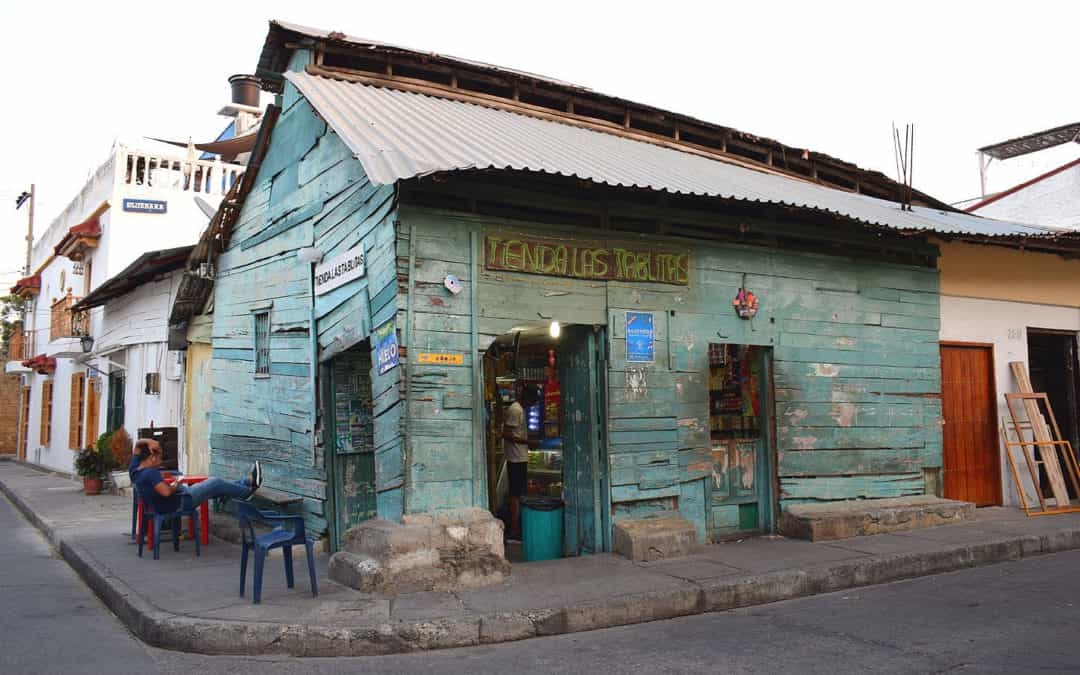Getsemaní, Cartagena
Criminality and abductions:
As I have already mentioned, Colombia is generally a safe country. The unsafe regions are very specific and well known and tourists are not allowed anyway. Some more details for each location Ι visited, based on my own, personal experiences are following:
- Amazonia overall is notorious for the drug dealing and rebels’ activities. The jungle is isolated from the rest of the country: there is no direct and easy access, no tourist agencies can make arrangements, and even locals avoid the entrance. If someone wishes to go there alone, the police/army will stop him/her as soon as entering the rainforest. The only accessible spot of the area is the one Ι visited, the part along the Amazon, which is totally safe because of the army presence. The only access can be by airplane via Bogota, or by ship from Brazil and Peru. Mainly, indigenous Amazon tribes live there and there is absolutely no danger at all, especially in the areas where tourists travel to. Other forbidden areas are those near the borderline with Venezuela, Ecuador and Panama, but as the political state of the country in these regions are interchanging (towards better at the moment), it is wise to get informed well before planning the trip.
- Bogotá: the capital generally has criminality issues, with gangs robbing tourists for money, jewelry, mobile phones and photographic equipment. However, there are neighborhoods that are safe for visitors even at night. The old town La Candelaria, the most touristy part of the city, requires extra caution after dawn and it is recommended to avoid walking around as soon as the sun sets down and when streets get less crowded from visitors. During the day, the police makes patrols all the time, but still the tourist needs to take care not to stray from the safe zone (Egipto neighborhood right next to it is dangerous). The same is true for the area where the cable car to Monserrate mountain is located, as many robberies have been reported there. The area where most of the banks are situated around the National Museum (that’s where we stayed), Macarena, and Champinero are regarded safe, but again one needs to get information before planning anything (via the internet in local webpages or from the embassies).
No matter what, the most important is not to wander around on foot alone at night and take care where you get a taxi from. In general, the local mass transportation means would better be avoided, as tourists are an easy target in there, especially if they speak no Spanish at all. Taxis are the main transportation means in big cities, but you need to be careful!
The major problem of Bogota (and across the country) is tourist kidnapping! No, they won’t kidnap you aiming at ransom from the embassy or from your family. They do not want any trouble with the authorities. Simply, under the threat of a knife or even gun, they will force you to enter in their vehicle, or they drug you before, and they rob you by taking you to several ATMs, until you empty all you bank accounts with the cards you carry! That’s a common strategy that some taxi drivers also practice! You find a random taxi on your way back from a night out, you get in, and the taxi driver rips you off, threatening you with a knife/gun and steals your jewelry, cash, mobile etc. (or emptying your bank accounts and leaving you in the middle of the road as soon as he is done with you). Can these really happen? They do, although not that often any more.
- The central Andean area, the Zona Cafetera, is generally safe. We need to keep an eye on our personal belongings at all times for sure (including our cash), but this part of the country is considered one of the safest. The local transportation means are also safe here. Ι used their long-distance bus from Bogota to Armenia and the local bus to Salento, with absolutely no problem (except for the crazy driver). In other regions of the country, it is better to avoid such trips and especially during night, as it has been reported that gangs sometimes hit the buses.
- The old town of Cartagena (the area within the walls) and Getsemaní neighborhood are also very safe. There are continuous patrols from the police and hence, it is safe to wander around everywhere even during late at night. Outside the walls, however, one needs to be more cautious. Me and my co-traveler stayed in the Marbella neighborhood, and we always used a taxi to or from the hotel. We were advised not to use buses or walk to the old town, especially if we were carrying our cameras. Furthermore, we visited the local market Bazurto, a notorious place for tourists, and that’s why most of them visit with an organized tour. We preferred though to do this on our own. We left most of the cash at the hotel and carried just a small camera. We used a taxi for both ways and we didn’t encounter any problem at all. However, a policeman stopped us and warned me that I had to keep an eye on the camera, suggesting me to hide it whenever I didn’t take photos. Otherwise, someone could steal it, by cutting my hand! Bocagrande is also considered safe and even though we did not swim as it was too crowded, we wandered around safely.
- The island of San Andrés surprised me unpleasantly, as it was not 100% safe. I had read some pretty negative comments beforehand, but I thought they were exaggerated. I found it strange that a small place in the middle of the Caribbean could still have issues of robberies, thefts, drug dealing, even assassinations. Immigrants from various places around the country, but also from Jamaica, unfortunately cause problems not only to tourists, but even to locals. That’s why visitors have to pay a tourist tax when entering the island, while people who want to move to the island, have to get a visa card, if they are not a local (by local, meaning not a local from Colombia, but a local from San Andrés). Extra caution is needed in the center, where robberies often take place (we witnessed such an incident in the town center during the afternoon), as well as stealing from the lodges. Indeed, if you check on Tripadvisor and Booking, you will come across several reports of stealing from inside the rooms. There is also an area just a bit outside the center, near the mangrove forest, where robberies have been reported too, even corpses of gang members have been found. However, moving around is safe, by local buses or cars/motorbikes/carts. But again, keep an eye on your cash and personal belongings.
** General advice:
Safety issues are common sense in all trips, such as not wandering around wearing expensive jewelry, or keeping mobiles and wallets/purses safely in closed/locked bags and so on, generally not provoking or showing off wealth. At the most dangerous locations of Colombia, we need to be even more careful and not to wander around at night carrying expensive photographic equipment, holding a map and be seemingly lost. In general, keep a low profile and stay unnoticed.
Regarding abductions and petty thefts: we must be careful not to be followed on the street, to walk only at places with adequate lights, to avoid small, isolated and secluded streets and to ask for help from the police or locals. Transportation within cities: we must always collect a taxi in front of our hotel or call for one, and when returning, we get a taxi from the taxi stop (police officers are there too) or we have made an arrangement beforehand with the same taxi driver that brought us from the hotel. The legal yellow taxis are safe and use a taximeter, they all have a license with a registration number (in the back of the seat with the driver’s picture on it, visible from the back seat), but we should never stop a random taxi at the street. Taxi companies and Uber are also safe solutions. Above all, do not carry a lot of cash on you, no or just one credit card and before the start of our whole trip we should take care that our cards have just a low withdrawal limit.

Street food on the main beach street, San Andrés island
Drugs:
Only one thing I can say here: if you don’t want to get into trouble, you won’t! Even though we were traveling around the international center of drug dealing, we did not even notice! Just one time, while walking and taking pictures in a small street in Getsemaní, a local man, sitting on the pavement holding a baby, asked us if we would like to try some cocaine. We replied we were not interested, and he left us alone. That was the one and only incident in the whole country! The government is very strict about the drug issue, and the airport control is extremely scrutinizing.
Health and vaccinations
Colombia is a very clean country, having excellent hygiene conditions. Street food and local bakeries and restaurants are very safe, and although water has to be bottled, in Bogota drinking tap water is safe as well (I was drinking tap water in the hotel room). No special vaccinations are needed, apart from the ordinary ones. For the Amazon region, the yellow fever vaccine and the one for hepatitis are needed, despite the fact that no one checked our health certificates, when we entered the regional airport (afterwards, locals informed us that they were not necessary). For mosquito bites, we used normal and strong repellents (with DEET 50%), long-sleeved shirts and trousers and were sleeping under mosquito nets. Although I was carrying the malaria pills, we did not use them. More details to follow on a post about the Amazonia trip.

